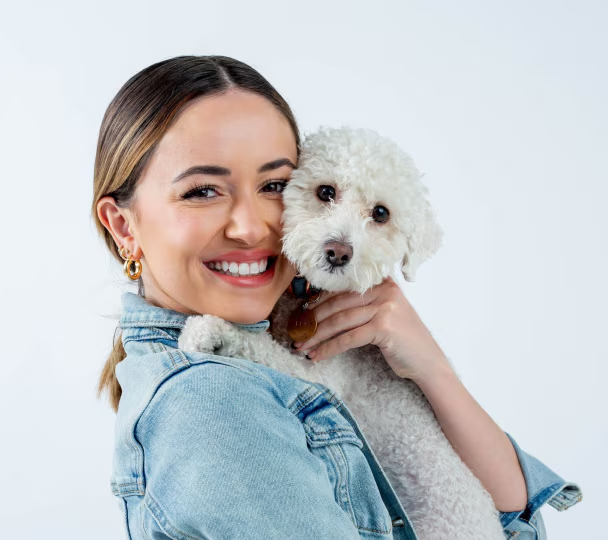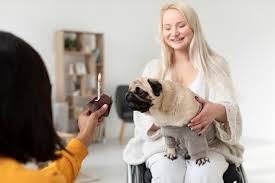
How to take care of a puppy Start by setting up a clean, comfortable space where your new furry friend can rest and feel secure. Gather all the essentials beforehand—such as a crate, feeding bowls, chew toys, grooming tools, and soft bedding—and organize them for easy access. A crate serves as a cozy retreat where your puppy can relax safely and develop a sense of comfort. Puppies are naturally playful and like to explore with their mouths, so it’s important to puppy-proof your home by removing any hazardous or chewable items. Establish a consistent feeding schedule to promote healthy growth and digestion. Young puppies typically require three to four small meals per day to sustain their energy, and as they grow older, you can gradually reduce the number of feedings.Monitor your puppy’s progress and adjust food portions according to their age, breed, and activity level. Keep in mind that larger breeds may have different dietary and timing needs compared to smaller ones. For personalized advice, it’s always wise to consult a veterinarian or pet care specialist to ensure your puppy’s nutritional and overall health needs are fully met.
Puppy training tips Establishing a consistent potty training schedule is essential for successfully teaching your new dog. Maintaining regular times for waking up, meals, potty breaks, and play helps your puppy feel secure and understand their routine. This consistency makes house training much smoother—something every new pet parent will appreciate.
Potty training (or house training) can be one of the most challenging parts of raising a puppy, but it’s also one of the most vital. Our comprehensive course, led by Traci Madson, CPDT-KA & CBCC-KA, includes videos, PDFs, cheat sheets, and checklists to guide you through the most effective methods for potty training. The course explains common potty issues, how to address them, and how to encourage your dog to eliminate in the right place.
Crates are often misunderstood as tools for punishment, but when introduced properly with positive reinforcement, they become safe spaces for comfort and rest. Over time, effective crate training can help reduce separation anxiety, prevent destructive behavior, and promote your dog’s ability to self-soothe. However, these benefits come only from proper training—not by using the crate as a punishment or keeping your pup inside for too long.
How to train a dog at home begins with choosing a specific command and sticking to it. Pick one word or phrase for each behavior and use it consistently. Changing your verbal cues from day to day will only confuse your dog and make training harder. Your dog needs to clearly associate each command with the behavior you expect. Along with consistent verbal cues, you should also be clear about your expectations. During training, only reward the behavior you want to encourage. Giving treats randomly or for the wrong actions can cause confusion. For instance, if you’re teaching your dog to give their paw, don’t reward them for sitting instead. Consistency is key — know exactly what behavior you want and reward small steps that lead toward that goal. If your dog starts by lifting their paw slightly, that’s a good first step and worth reinforcing at the beginning. As your dog improves, gradually raise your expectations until they perform the full behavior correctly. However, avoid rewarding actions that don’t match your command, as this can slow their learning progress.
Best dog food for puppies delivers the essential nutrients growing pups need for strong muscles and healthy bones. With every serving of Purina Pro Plan Puppy Formula, your young dog receives the ideal balance of protein, fat, calcium, and phosphorus to support healthy development. Over 50 dog owners in our survey feed their pets Purina Pro Plan recipes, with most citing their veterinarian’s advice as the main reason for their choice. In addition, all Purina Pro Plan Puppy Formulas include probiotics for digestive support, omega-6 fatty acids from fish oil for skin and coat health, and a rich blend of essential vitamins and minerals.
Best dog food for sensitive stomach issues often goes beyond simply addressing food sensitivities—it can sometimes involve managing true food allergies. According to the VCA Animal Hospital, food allergies are among the most common types of allergies seen in dogs. In these cases, a dog’s immune system overreacts and creates antibodies against ingredients it would normally tolerate. This reaction typically targets a specific component of the food, most often a protein or complex carbohydrate. Because antibody formation takes time, food allergies generally appear after long-term exposure to the same food type or brand. Symptoms can include itchy skin, irritated ears, or frequent paw licking. Common protein sources such as beef and chicken are known triggers, which is why switching to a novel protein like lamb or salmon can often soothe a dog’s sensitive stomach or allergy symptoms.
Diagnosis usually involves an elimination diet or a blood test, as advised by your veterinarian. While there’s currently no cure for food allergies in dogs, managing the condition through ingredient avoidance and selecting a suitable diet is the most effective approach to keeping your pet healthy and comfortable.
Dog grooming tips at home Taking care of your dog’s paws is essential, as nails that grow too long can cause discomfort. If you notice your dog’s nails clicking on hard floors, it’s a sign they need trimming. There are several tools available for this task, including standard nail clippers, guillotine-style clippers, and nail grinders or files. Clippers require steady hands and accuracy, while grinders gradually smooth down the nail tips. When trimming, watch for a light pink line inside the nail called the quick, which contains nerves and blood vessels. Avoid cutting into this area to prevent pain and bleeding. For dogs with dark-colored nails, the quick is harder to see, so trim small sections at a time. Stop when you notice a dark spot in the nail’s center — that’s the quick.
How to stop a dog from barking Keep your dog both mentally and physically active to help reduce excessive barking. Consistent exercise, engaging playtime, and stimulating toys are key to maintaining their happiness and balance. A well-exercised and mentally occupied dog is less likely to bark out of boredom or pent-up energy. Gradually desensitize your dog to common triggers, such as the doorbell or other dogs, by exposing them slowly and calmly. Over time, this helps lessen their anxiety and reactivity. You can also use clicker training—a method that uses a small device making a clicking sound to signal desired behavior. By pairing the click with treats or praise, your dog learns that staying quiet leads to rewards.
How to potty train a dog the easier it will be. Puppies are usually ready to begin between 12 and 16 weeks old, as they have enough control over their bladder and bowels to learn to hold it. If you adopt a puppy older than 12 weeks who hasn’t been trained yet, potty training can be more challenging. You’ll need to undo any existing habits and teach new, positive routines. One of the most effective methods for potty training is crate training. Many dog owners prefer this approach because it helps keep the home clean during training and is convenient. While your dog is in the crate, you can monitor him for signals that he needs to go outside. As soon as you notice these signs, take him immediately to his designated potty area. Some people are hesitant about using a crate, but it often makes life much easier for both the owner and the dog. Crate training not only assists with potty training, but it also helps your dog get comfortable with being confined for travel, vet visits, or other situations. When your dog is accustomed to the crate, he will feel safe and content, no matter the circumstances
Dog Care Essentials Checklist to colder areas, a cozy coat for your dog might be necessary! Matching it to your outfit is a fun bonus, but not required. Begin with a properly fitting collar and a durable leash that feels comfortable in your hands. The choice of material—whether nylon, leather, or rope—depends on your preference. To ensure the right fit, measure the broadest part of your dog’s neck and the chest just behind the front legs. You can use a flexible measuring tape or a piece of string with a ruler. Also, remember to clean up after your dog. A convenient option is a poop bag holder that attaches to the leash or harness. The Mighty Paw Poop Bag Holder, for instance, features a zippered compartment large enough for a roll of bags plus small items like keys or lip balm. It can clip to a leash or harness D-ring or attach directly to the leash with Velcro straps.
How to introduce a new pet to your home by setting up your new pet in a quiet area of the house that isn’t heavily trafficked by other pets or people. The goal isn’t to isolate them, but to let their keen senses gradually get accustomed to the presence of others before a face-to-face meeting. Over several days, your pet can hear and smell the household members, which helps make the eventual first meeting smoother. Positive reinforcement is very useful during introductions. Offer praise, treats, and reassurance to all pets involved. Keep initial interactions brief and pleasant, only extending them once everyone seems calm and comfortable. Planning and preparation are essential, especially in homes with other pets, children, roommates, or busy routines. Remember, the key to success is patience: slow, steady progress works best. Don’t expect everyone to adjust instantly. With time, respect for personal space, and consistent care, all pets and people can adapt safely and harmoniously.



